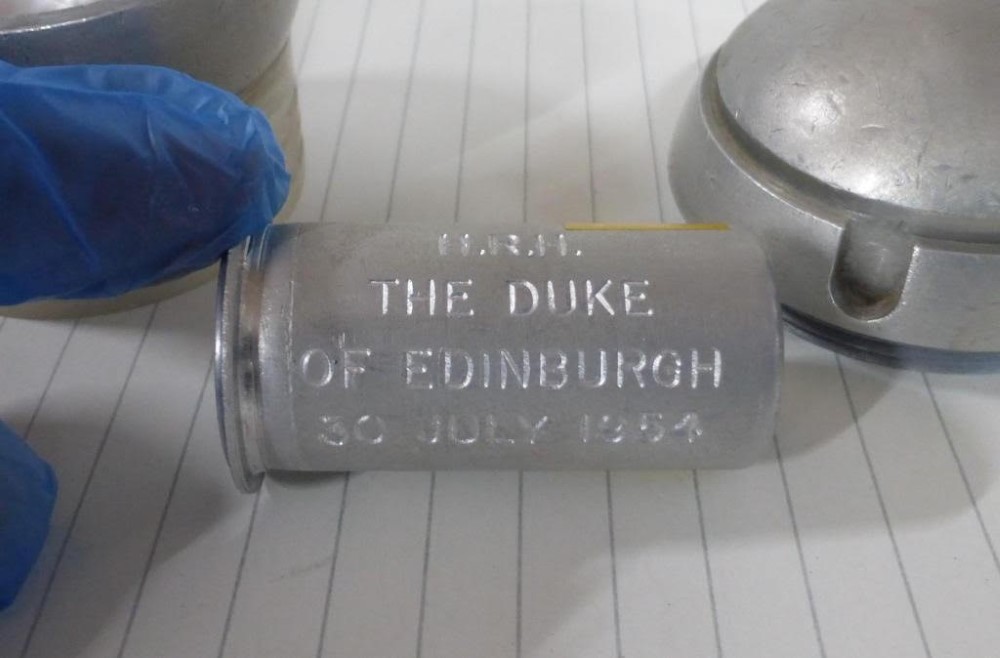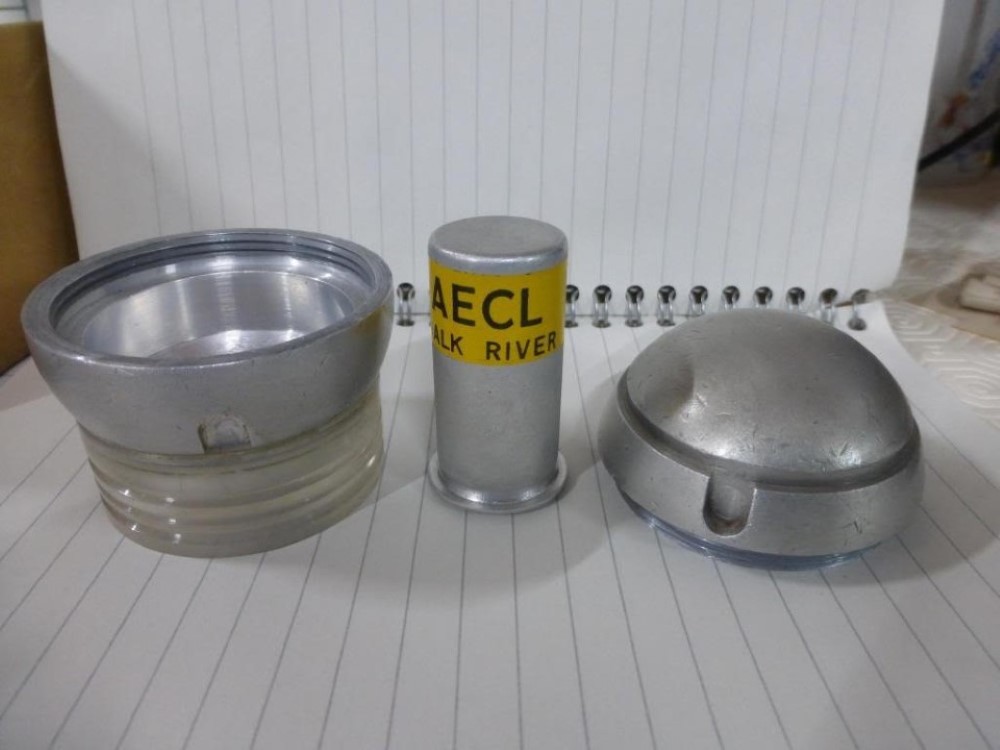A previous article by Morgan Brown under the Nuclear Heritage banner (NRT April 14, 2021) commemorated the July 30, 1954, Royal visit to the Chalk River Nuclear Laboratories by Prince Phillip. the Duke of Edinburgh and Consort to Her Majesty Queen Elizabeth II. Morgan was able to find a number of recollections about the trip and to share them with readers.
Usually on a trip of this significance the important visitor is presented with a token gift of some sort as a souvenir of the event. What might a nuclear research laboratory have presented to Prince Phillip? There appeared to be no record of what it might have been.
In February, 2023, the Nuclear Heritage group received an interesting request. It came to us via a rather complicated route. Following the death of Prince Phillip (April, 2022), a clerk at the Art Storage Inventory group of the Royal Collection Trust in the U.K. had come across a multi-piece artifact, part of which was a small aluminum container with a yellow sticker labeled “AECL Chalk River”. Engraved on the side of the container were the words “ H.R.H., The Duke of Edinburgh, 30 July 1954”. The clerk contacted the U.K. Nuclear Decommissioning Authority (NDA) for assistance in identifying the artifact. By chance, Michelle Donaghue of the NDA had paid a visit to the Canadian Nuclear Heritage Museum (CNHM) in September of 2022. Michelle forwarded the request, with attached photographs, for assistance to the Nuclear Heritage group.
The gift, seen in the two photographs, turned out to be one of the self-service irradiation balls used in the NRX reactor at Chalk River. A sample of the material an experimenter wished to irradiate would be sealed in an aluminum container which was then in turn placed inside a spherical two-part “ball” that was screwed together. The ball was then rolled to the desired position, irradiated for a pre-determined time and then allowed to roll back out to the exit port for the experimenter to examine.
Although the collection at the CNHM is unlikely to ever receive the actual artifact presented to Prince Phillip for display, we do at least know what sort of gift might be considered acceptable should a future visit occur.


